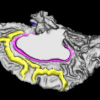Free Online Productivity Tools
i2Speak
i2Symbol
i2OCR
iTex2Img
iWeb2Print
iWeb2Shot
i2Type
iPdf2Split
iPdf2Merge
i2Bopomofo
i2Arabic
i2Style
i2Image
i2PDF
iLatex2Rtf
Sci2ools
117
Voted
ICCV
2007
IEEE
2007
IEEE
Optimization Algorithms for Labeling Brain Sulci Based on Graph Matching
Graph matching techniques are widely used in pattern recognition problems such as scene description, finger print identification, or face recognition. In this paper, we put forward two optimization methods for graph matching and compare them in the context of brain sulcus identification. The first approach is based on a constraint search in a neighborhood; the second uses a genetic algorithm for optimization. Experiments demonstrate that both methods yield satisfactory identification rates, however, the second method is more general and easier to adapt to similar problems.
Brain Sulcus Identification | Computer Vision | Finger Print Identification | Graph Matching Techniques | ICCV 2007 | Pattern Recognition Problems | Satisfactory Identification Rates |
Related Content
| Added | 14 Oct 2009 |
| Updated | 30 Oct 2009 |
| Type | Conference |
| Year | 2007 |
| Where | ICCV |
| Authors | Faguo Yang, Frithjof Kruggel |
Comments (0)

